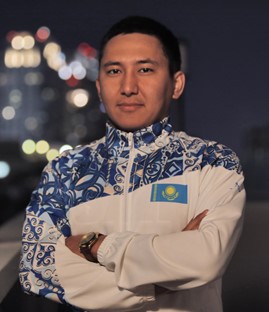Policy makers around the globe are concerned with the possibility that nations will develop nuclear weapons, and policies often depend upon an understanding of the tools and time required for a nuclear weapons program to succeed. The breakout time is defined as the time required to acquire the minimum amount of weapons-grade plutonium needed for a nuclear explosive device, and nuclear weapons latency is defined as the time needed for a non-nuclear weapons state to make a nuclear weapon given their current progress, motivations, and intentions. Kazybek Nurym, a student working with Center for Nuclear Security Science and Policy Initiatives (NSSPI) Director Dr. Sunil Chirayath, is investigating a state’s breakout time and nuclear weapons latency using software developed at Texas A&M University for India’s historical case—the 1974 plutonium bomb test in Rajasthan-Pokhran. The test case will help validate the tool’s predictive capability.

The Nuclear Weapons Latency Tool (NWLT) was first developed by NSSPI graduate Dr. David Sweeny working with former NSSPI Director Dr. William Charlton. It has since been used by NSSPI researchers to try to predict the nuclear weapons latency of Iran. While that test case was an attempt to predict the future, Nurym’s investigation looks to the past to show how accurate the tool can be at these predictions.
According to Nurym, “Texas A&M’s nuclear weapons latency tool is convenient, easy to use, and can be used by scientists, engineers, policymakers, or scholars to calculate and predict any country’s breakout time and nuclear weapons latency using the information available from the open literature.”
The NWLT is based on the stochastic Petri net simulation method and employs three other software: Microsoft Visio, Microsoft Excel, and MATLAB. A Petri net is a directed bipartite consisting of places, transitions, and arcs. The tool is capable of representing the whole proliferation network and the pathways that could lead to the development of a nuclear explosive device. Overall, Nurym found that the NWLT provided a reasonably accurate nuclear latency and breakout time values for India’s first nuclear weapon.
Nurym successfully defended his thesis this summer and will be graduating in August 2021 with a Master of Science degree in nuclear engineering. Before joining NSSPI, Nurym received his Bachelor’s degree in Thermal Energy from the Eurasian National University, Nur-Sultan, Kazakhstan, in 2016. He started his career as a laboratory technician, and then he got an assistant project manager position in a company managing the Kazakhstan-China Gas Pipeline. Currently, he is planning to work in NAC Kazatomprom Joint Stock Company, the world’s largest producer and seller of natural uranium.